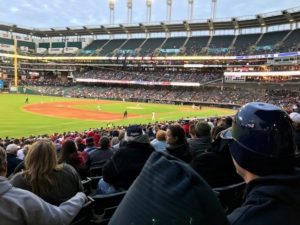In the fourteenth century, French philosopher-priest Jean Buridan, a student of William of Ockham, posited the hypothetical story of a donkey that starved to death while situated equidistant from two delicious bales of hay. The fictional donkey was supposedly a victim of indecision and thus the object of intense navel gazing among those who want to debate the existence of free will. No one ever asked, to my knowledge anyway, whether the donkey was mentally ill or simply traumatized and thus incapable of acting on his own behalf. Mental health, after all, was not well understood in the Middle Ages. That’s one of many reasons why the term “medieval” has derogatory connotations.
I mention this because it has nothing to do with why I have produced nothing on this blog for two months. Despite not just two, but a multitude, of topics to choose from, I failed to choose any, but I can certify that I am neither mentally ill nor incapable of satiating my hunger to address the vital issues of the day.
I simply failed to find adequate free time to do so because numerous other personal and professional priorities intervened. This blog has always been the product of a creative mind seeking yet another outlet beyond those provided in other aspects of my life. Put simply, I prioritized other attractions or compulsions beyond a couple of equally intriguing blog topics. Even donkeys are more creative in their choices of food than Buridan’s paradox suggests. But I won’t take the comparison any further.
The simple fact is that this blog is and always has been a sideline activity, subject to interruption by more urgent demands on my time. Over the past two months, my wife and I took a weeklong vacation in which two grandsons, 12 and 17, accompanied us as we circumnavigated the shores of Lake Michigan. I may yet write about that in various ways, but I have not found time. Instead, when I returned, I reported to duty at Northwestern Memorial Hospital for a prostate biopsy. The results were ambiguous, or so I was informed, so I get to do it again in a few months. At least they put you out, so you don’t know what the doctor is doing while he is doing it, but it certainly blows your day. I was also busy on planning consulting work, launching my fall semester University of Iowa disaster planning class before Labor Day, professional volunteer work, and then helping a daughter who became the victim of a hit-and-run accident involving four vehicles on I-80 just after the holiday. She is largely okay, but for a minor head injury that causes headaches, but her car has been totaled, and I just helped her find a replacement. Before I knew it, weeks had gone by in which this blog remained a back-shelf priority.
Multiple bales of great blog topics remain in front of my fertile mind, waiting to be chewed on. Trust me. I’ve been dying to tackle them, but my brain is not starving. Instead, it was overwhelmed by the shiny objects on the other side of the barn. This blog, however, remains important to me as a unique form of public service that seems to be of value to nearly 32,000 subscribers. But it is also a one-person show. I am my own writer, illustrator, editor, and administrator. Ain’t nobody here but me, and Google Ads does not generate enough money for a fast-food dinner, let alone to hire help. As slugger Pedro Cerrano says to his voodoo god Jobu in Major League, before hitting a home run in a playoff game, “I do it myself!” (Yes, I skipped the preceding obscenity. This is a family blog, after all.)
Jim Schwab



